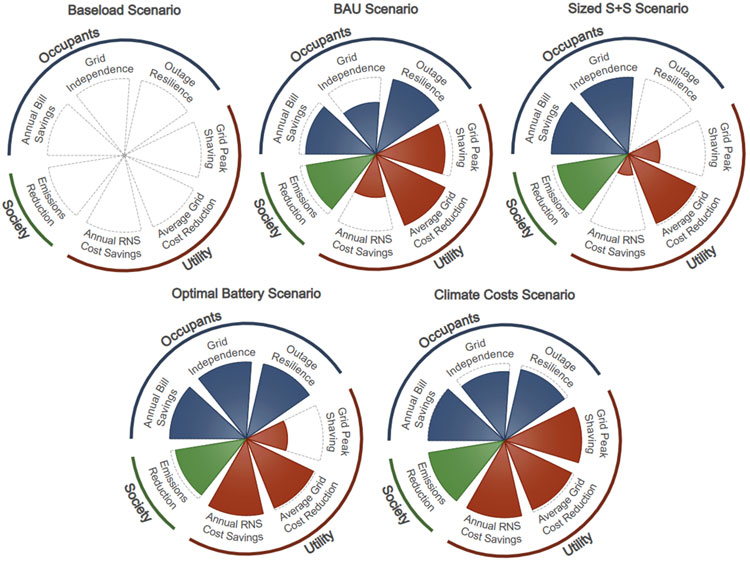REopt Unlocks Distributed Energy Resource Potential in the Residential Sector: Findings From the Nova Analysis Project

An example of a scorecard that compares stakeholders, metrics, and relative metric values across scenarios in the REopt Nova Analysis project. Illustration by National Laboratory of the Rockies
Energy efficiency and the adoption of distributed energy resources such as rooftop solar and battery storage are increasing in the residential sector in the United States. The costs and benefits of these systems are distributed across multiple stakeholders, including homeowners, utility companies, and society. It is essential to understand how these costs and benefits are distributed among stakeholders and how they vary across different geographical locations and deployment scenarios. To address this, NLR conducted the Nova Analysis project. As part of this project, researchers developed and applied a set of performance metrics to evaluate the collective value of energy efficiency and distributed energy resources for each stakeholder group across the contiguous United States.
To model the performance of buildings and distributed energy resources across a range of geographical areas, the Nova Analysis project employed an innovative workflow that combined multiple NLR tools and datasets. These tools and datasets include:
Within the Nova Analysis project, REopt was used to determine the cost-optimal deployment of solar and storage systems in conjunction with different energy efficiency packages for residential homes. REopt was also used to assess how existing solar and storage system deployments in two case study communities in Arizona and Vermont could offer additional value to homeowners and the power grid through optimized battery dispatch. The outputs from REopt were then processed to generate "metrics scorecards." These scorecards were designed to capture performance outcomes that are important to residents, utility companies, and society.
The workflow and metrics developed in the Nova Analysis project can serve as a foundation for future studies aiming to quantitatively and holistically assess the impacts of programs and policies related to energy efficiency and distributed energy resources.
Related Stories
Savings in Action: Lessons from Observed and Modeled Residential Solar Plus Storage Systems, nlr Technical Report (2022)
Sponsors
U.S. Department of Energy Solar Energy Technologies Office
Key Partners
Clean Energy Group
sonnen
Contact
Share
Last Updated Dec. 31, 2025
